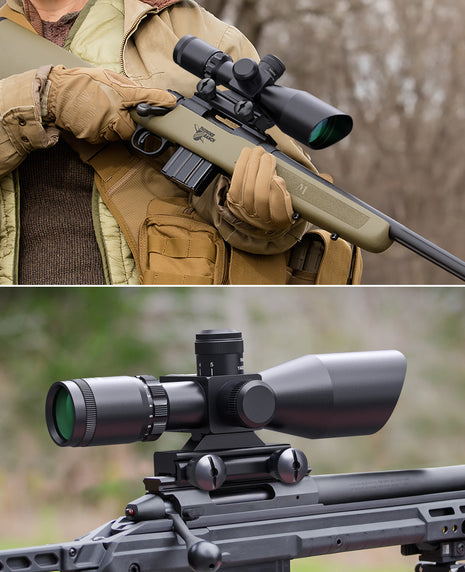Should You Choose a Red or Green Laser Sight?
- 3 Tiempo mínimo de lectura


Laser sights have grown in popularity in recent years because improved technology allows for smaller, lighter, and more powerful lasers. The increase in your accuracy and target acquisition speed helps you make a shot when it's most important. While a laser sight is no substitute for practice and experience with firearms, it will help you stay on target even in tense situations. If you're looking to purchase one, the first step is deciding between a green laser and red laser, and the decision comes down to more than personal preference. The word “laser” is actually an acronym that stands for Light Amplification by Stimulated Emission of Radiation. While this sounds complicated, it essentially means a laser both produces and amplifies light. Green lasers and red lasers each have strengths and weaknesses, which I discuss below.

Red Lasers
The traditional choice, red lasers are durable and cheaper to produce. Since they need to stand up to the recoil from your firearm, the strength of a red laser is often ideal. Red lasers also have a wider operational temperature range than green lasers, so if you're in particularly cold or warm conditions, a red laser will work when a green laser will not. While this range varies between models, a red laser sight is generally operational between 15 and 120 degrees Fahrenheit, while a green laser is operational between 40 and 100 degrees Fahrenheit. So if you're a police officer in a Northern State in the winter, you'll want to go with a red laser. Also note that the simpler technology of a red laser consumes less power than green, so the battery often lasts longer.

Green Lasers
The most significant advantage of a green laser is daytime visibility. You will have a much easier time seeing a green laser in broad daylight than red because the color green is closer to the center of the visible light spectrum at about 532 Nanometers, while red is higher at 635 Nanometers. This means other light sources are more likely to obscure red lasers, whereas a green laser is brighter and doesn’t experience as much interference.
While a red laser may only be visible up to 25 or 30 yards during the day, a green laser can be visible at 100 yards or more. This is huge for target shooters, as target shooting generally happens during the day. Green lasers are also extremely useful for laser bore sights, as the color is easier to see on a piece of paper at 50 yards.
The drawbacks of a green laser are price and durability. A green laser of comparable quality to a red laser often costs more. This is because of the advanced technology required to make them and how challenging it is to make a green laser that can withstand the shock from recoil. The tech in a green laser is more delicate, so they aren’t as durable.

Summary
All in all, a tactical laser sight is an excellent investment for most shooters. Whether you prefer handguns, shotguns, or rifles, both green and red laser sights give you an advantage when aiming as they increase your target acquisition speed. We also have plenty of red dot sights and rifle scopes if you’re looking for a matching optic.
Tags
- Compartir en:
- Deel
- Tweet
- Póngale un alfiler.
- Messenger
- Correo electrónico
You May Also Like
Blogs & News
-

, por C V Is a 1-6x BDC Scope Better Than a 3-9x for AR-15?
-

, por C V How to Zero an AR-15 Scope with a BDC Reticle
-

, por C V What Makes Motion Awake Red Dot Sights Unique
-

, por C V Best Motion Awake 2 MOA Red Dot for AR-15 Home Security












